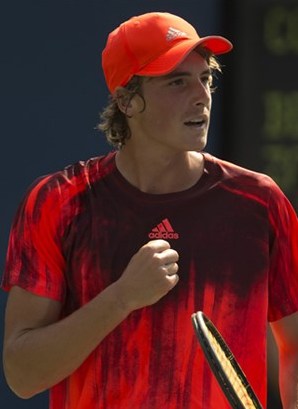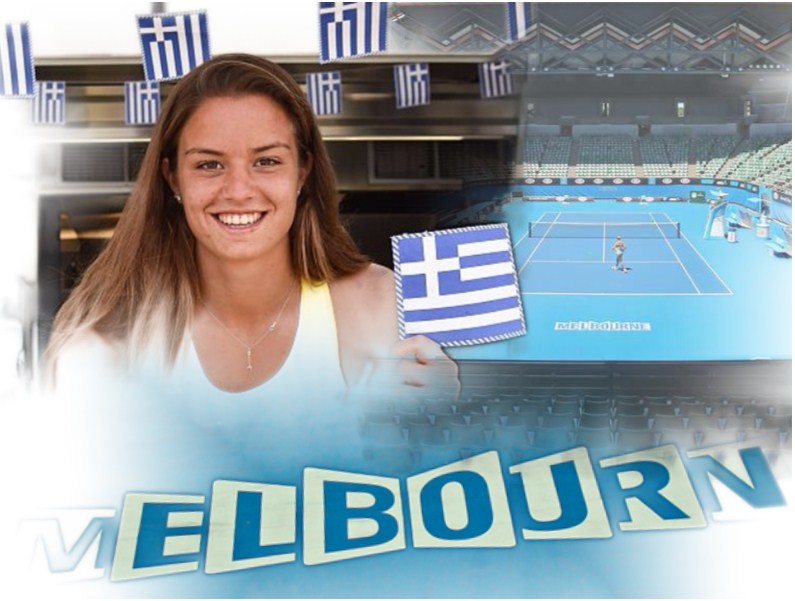At 33 years of age, David Ferrer is improving once again. Ferrer posted his second best season on the ATP World Tour in 2015 with five titles, trailing only his stellar 2012 season when he won seven tournaments, vaulting the Spaniard into the Top 5 in the Emirates ATP Rankings.
Ferrer finished last season ranked No. 7, with the fourth best win percentage at 76.8 per cent – trailing only Novak Djokovic, Andy Murray and Roger Federer in this key performance metric.
Ferrer finished the 2013 season ranked No. 3 and if he’s to climb back up the Emirates ATP Rankings to those lofty heights in 2016, the serving side of the equation will be required to perform at the same high level as his return game.
What Ferrer Does Well
An Infosys ATP Beyond The Numbers analysis clearly shows the engine room of Ferrer’s resurgence is his resilience in returning serve.
The mental toughness and physicality he brings to the court can actually be quantified on the scoreboard. His mind helps him get ahead, and his legs make sure he stays there.
For Ferrer, it all starts with winning the crucial first point of the game. When the Spaniard won the first point of his opponent’s service game last season, he broke 38.9 per cent of the time – better than any other player ranked in the Top 8.
He was also the best at converting a break of serve with his opponent serving at 0/30, at 47.6 per cent of the time, and at 0/40, at 56.4 per cent.
Ferrer also led the Elite Eight breaking from a score of 15/15, at 27.9 per cent of the time.
It’s not easy to pinpoint greatness on the return side of the game, but those analytics speak directly to the the iron will of the 5’9”, 160-pound warrior from Valencia.
What Ferrer Needs To Improve
Ferrer was the best of the Elite Eight at breaking with the opponent serving at 0/15, but he had the lowest percentage of the eight holding from 0/15, at 61.5 per cent. Federer led the pack at 79.1 per cent, with Djokovic close by at 78.3 per cent.
The problems worsen for the Spaniard when you move the spotlight to aces and double faults. Ferrer only hit 155 aces last season, well behind Tomas Berdych’s 583 or Stan Wawrinka’s 576.
Unfortunately, free points are very hard to come by.
The ability to get out of trouble hitting aces on break points is a huge advantage for players to call upon, with Berdych (37 aces), Wawrinka (31 aces) and Murray (30 aces) leading the Elite Eight players in this very specific category.
Ferrer was only able to manage five aces on break points in 2015, being forced to extend a lot deeper into points to try and hold his service games.
The Spaniard also committed 14 double faults on break points, to be the only player in the Elite Eight to have a negative ratio in this crucial area.
Double faults were a real problem area for the Spaniard in 2015, notching up 199, to easily have the most of the Elite Eight players. By comparison, Djokovic was on court a lot more last year (155 hours to Ferrer’s 124 hours) and only hit 135 double faults.
Ferrer also had the second lowest win percentage of the Elite Eight on second serve points won in 2015 at 54 per cent – well behind World No. 1 Djokovic at 60 per cent.
Ferrer had the lowest percentage of the Elite Eight holding serve from 15/15 (84 per cent), 30/0 (95 per cent), and 40/0 (97 per cent).
The percentages were still very high, but just not at the same rarified level of the other players that he is trying to overtake.
Summary
To recapture his 2012 form, Ferrer’s serve performance needs to step up once again.
He won 67 per cent of his service points in 2012, and only 64 per cent last season. Service games won were down from 85 per cent to 80 per cent from 2012 to 2015, and break points saved has a similar drop, from 65 per cent to 60 per cent.
Like most pro’s on the ATP World Tour, slight day-to-day adjustments in serve technique, rhythm, coil, energy, height of contact and explosion with the legs will be constantly evaluated and tweaked.
At the 2015 Australian Open, Ferrer averaged only 177kph (110mph) on first serves, and 152kph (94mph) on second serves in reaching the fourth round.
If he is to go deeper at the first Grand Slam event of 2016, more power or more precision to the corners, with his serve, will be called upon to back up one of the best return games our sport has ever seen.
Read more insights at Infosys ATP Beyond The Numbers



